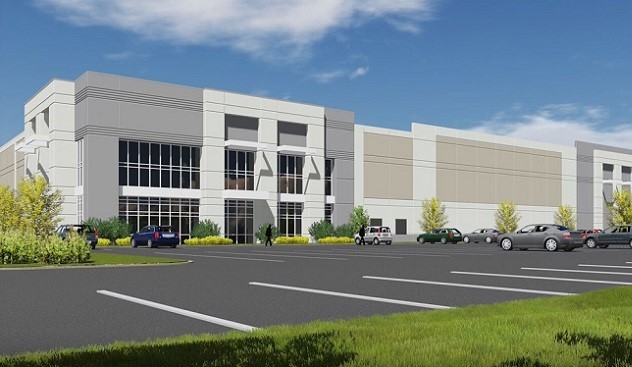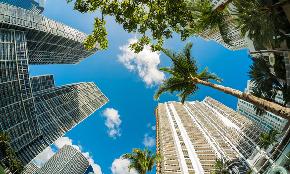 Versus Partners and Clarion Partners are building this 702K building in GreenParke at Airwest Business Park, part of a new wave of construction.
Versus Partners and Clarion Partners are building this 702K building in GreenParke at Airwest Business Park, part of a new wave of construction.
INDIANAPOLIS—The past year has been a remarkable one for the Indianapolis region’s industrial market. In late 2015, the vacancy rate was at an already-low 5.0%, and since then it fell another 140 bps to just 3.6%, according to a new report from Cushman & Wakefield. That steep decline came after a construction boom that saw developers complete millions of square feet of new buildings, mostly in response to intense demand from distributors and warehouse users. And now that users have absorbed much of that space, developers have already started another round of new construction.
“They have a little more faith since they’ve seen one round of construction be successful,” Trevor Kirsch, research analyst, tells GlobeSt.com. What makes the region especially attractive is that due to an intense demand for distribution space, Indianapolis saw a great deal of absorption even during the depths of the recession. That has given it a reputation for resilience, so investors now see it as a good bet for both the near future and the long term. “It seems like a wise place to put capital.”
But although distribution will remain key for the regional economy, Cushman & Wakefield researchers add that the manufacturing sector has also played an important role.
“Manufacturing employment is not only essential to Indiana’s industrial real estate markets, but also the state as a whole as Indiana remains in the top three states for overall percentage of GDP represented by manufacturing output,” according to the report. “Warehouse and manufacturing labor will remain a hot topic throughout the next year as the next wave of speculative industrial construction is underway, and any companies considering a new warehouse location in Central Indiana will undoubtedly be examining the labor pool as a key deciding factor in their location analysis.”
Total nonfarm employment has risen by 1.8% in the past year, the researchers found. And manufacturing grew approximately 1.0% since mid-year. “Manufacturing job growth should continue to rise for Central Indiana as a considerable number of new warehouse-using companies to the market have announced plans for new jobs,” Cushman & Wakefield says.
The firm also says that the Indianapolis industrial market reached a historical level of occupancy gains in the third quarter, as over 3.4 million square feet of net absorption occurred, bringing the year-to-date level to nearly 6.4 million square feet. And the Southwest submarket was the strongest, with 1.67 million square feet in occupancy gained. As usual, modern bulk warehouses saw the most leasing activity, with just north of 2.2 million square feet in net absorption for the quarter.
“We expect net absorption to continue at a steady pace as several sizeable deals have been signed but have not yet taken occupancy,” according to the report. In addition, the firm expects “a flurry of construction to be delivered in the coming quarters as nearly 6.1 million square feet of industrial construction remains underway,” about half of it on a speculative basis.
Kirsch believes that is at about the level needed by prospective tenants in the region. By mid-year, he says, Cushman & Wakefield “saw a lot of tenant requirements out for huge chunks of space. No one feels we are at the point of overbuilding.” In fact, “the brokers are anxious to get more product so they can lease it up.”

















 Copyright © 2024 ALM Global, LLC. All Rights Reserved.
Copyright © 2024 ALM Global, LLC. All Rights Reserved.